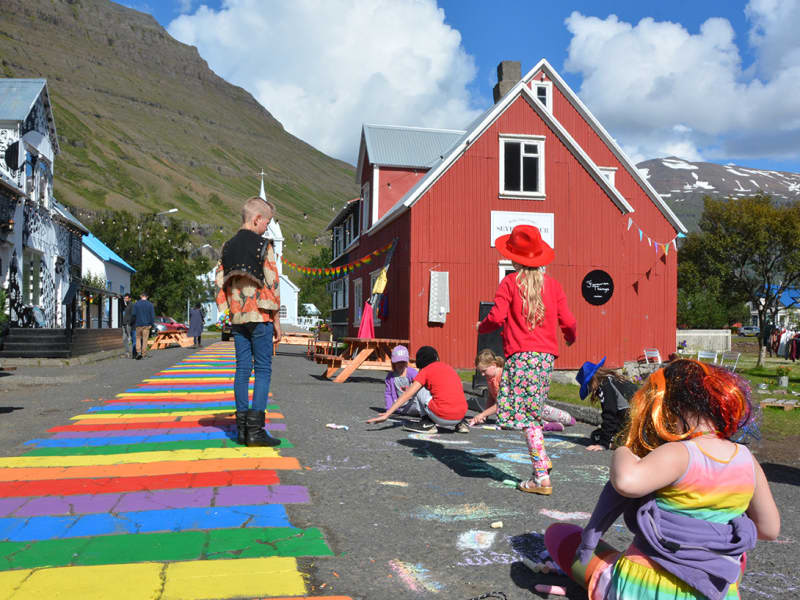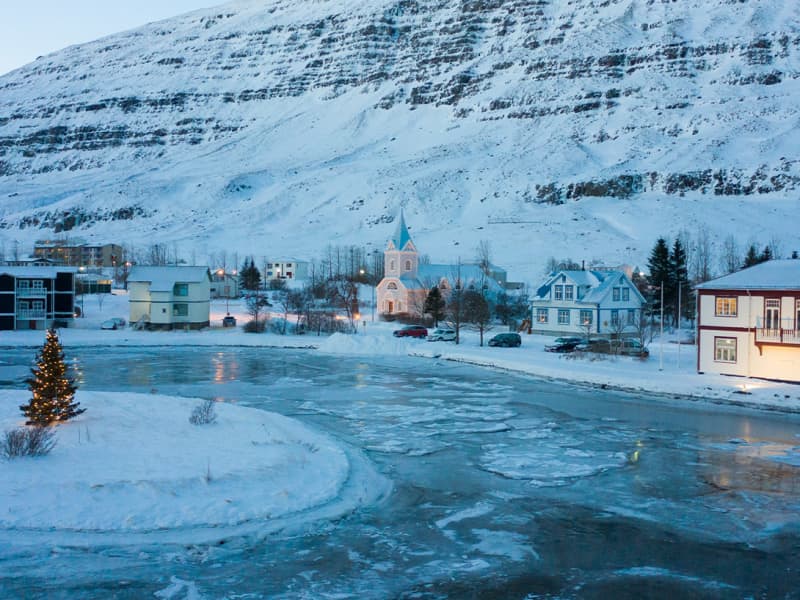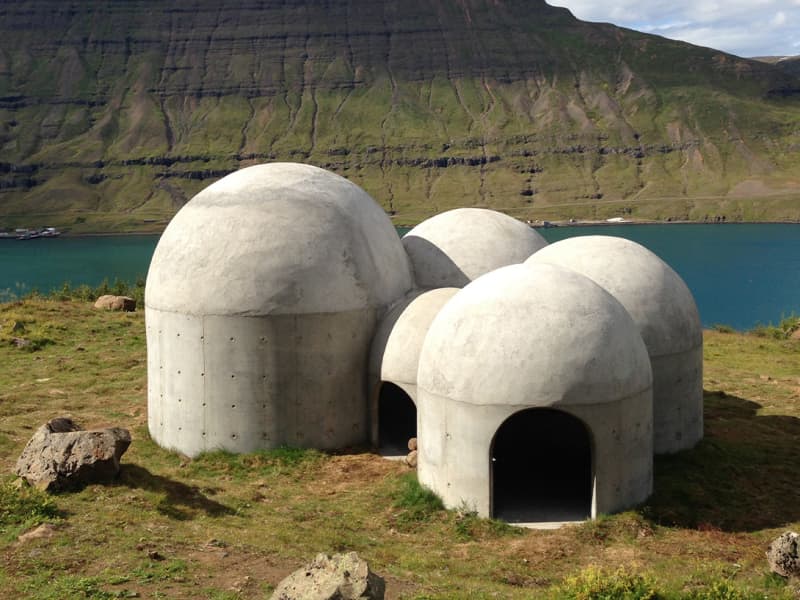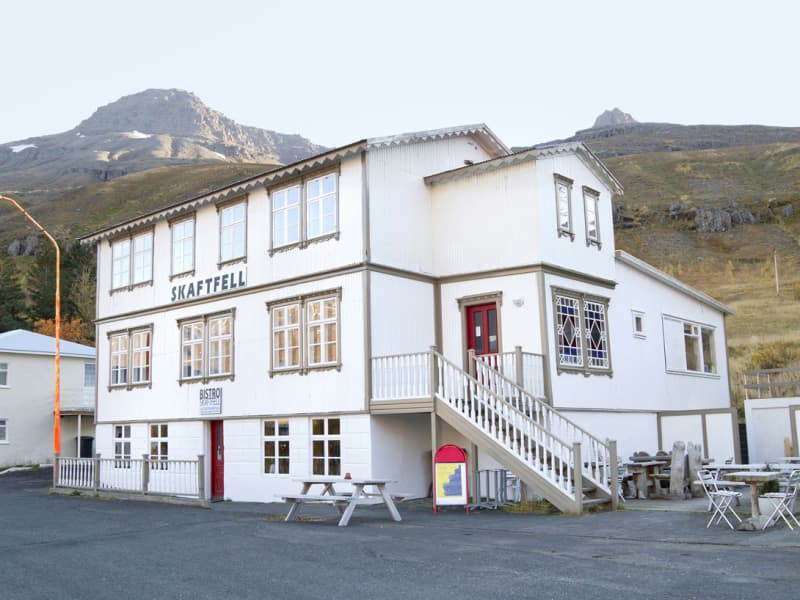Rainbow Street in Seyðisfjörður
The small town of Seyðisfjörður is famous around Iceland for its colour and creativity. One of its best-known features is the Rainbow Street (referred to as Regnbogagatan in Icelandic) in the heart of town, which can best be described as a beautiful community project.
On a sunny day in the summer of 2016 the town's residents got the idea to paint Norðurgata, a cute street in need of some love and restoration. That same night, people in town as well as the town’s employees got together and painted the colours of the rainbow onto the street – unknowingly creating one of the most popular visual landmarks in East Iceland. Year round, guests from all over the world come to visit the Rainbow Street in Seyðisfjörður to snap a "selfie" of themselves on this colourful street, surrounded with old historic houses which the town is also known for. At the end of the street stands the town’s picturesque church, usually referred to as “Bláa kirkjan” or the Blue Church. Ever since then the residents get together regularly each summer to repaint the street, and everyone is welcome to take part.
The Rainbow Street is located right in the town’s center and close by are some great restaurants, the local handcraft market and Blóðberg, a design boutique, all worth checking out. One of Iceland’s best sushi restaurants, Norð-Austur on the second floor of Hotel Aldan, serves sushi from the freshest ingredients available. Café Lára is the perfect stop for some soul food, juicy burgers, and local fish.
Every summer, the Blue Church Summer Concert series takes place and has become one of the major cultural events in East Iceland. It offers a varied program of music where some of the country’s most interesting musicians perform.
Seyðisfjörður is one of the highlights on our Fjord to Fjord travel route. If you are currently travelling around East Iceland or planning your next trip, we highly recommend taking checking out our travel routes for inspiration.
View





